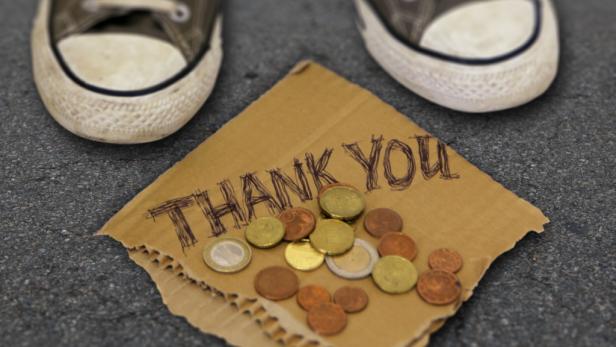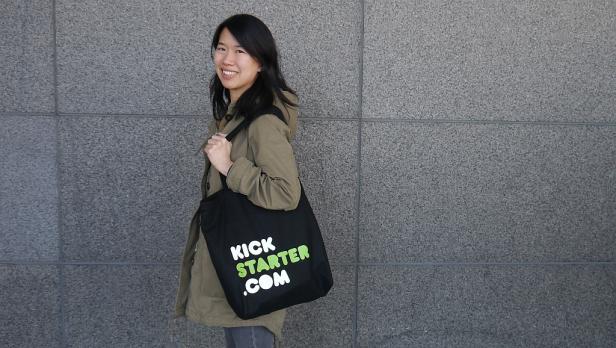
Kickstarter: Game Financing with Problems
Dieser Artikel ist älter als ein Jahr!
As the stated goal of $400,000 had been achieved after only a few days, even Tim Schaefer was flabbergasted. The designer of classics such as "Grim Fandango" or "Day of the Tentacle" chose the Crowd-funding platform "Kickstarter" to finance a new adventure game. For established publishers, the project was too special, private investors also recoiled, so an alternative way of financing the game had to be found. The rest is game history. At the end of the running period the production received $3.3 million only from the purses of users and fans. The yet unnamed game is to date the best funded project in the history of Kickstarter.
The gaming industry goes beggingAs Kickstart was a place to go especially for Indie films, music, art projects or comics. At least since this million dollar coup the Crowd-funding platform turned out to be a bearer of hope for the whole business. The idea of replacing banks or investors with small donations from fans found a lot of favour. On average, every stakeholder makes a contribution of $42 to a game project at Kickstarter - which is only due if the goal stated by the project applicant is reached. If it works, one gets the good feeling of having promoted something creative and mostly gets a free copy of the game as soon as it is finished.
In addition, many designers rely on inducements: If you contribute more, you get an invitation for dinner with the designer or even become a character in the game.
Games get started on "Kickstarter"Already in 2011 the games section of Kickstarter, (which keeps 5% of all successful funding), could increase the number of supporters by about 730 % and therefore, address more new sponsors than any other unit. Whereas, in the first two years of its existence the game section could earn $1.7 million, it has already earned $6.2 million since the beginning of this year.
Small Indie studios, as well as frustrating industry veterans, see the pre-funding from fans as an attractive alternative - also because you can explore the market and avoid wasting working hours.
"Especially for smaller studios, Crowd-funding is an exciting chance. You can test if an idea finds an echo and then explore a niche market", Jörg Hofstätter from the Viennese studio "Ovos" says. Jurie Horneman from MiPuMi agrees: "During the last years it has become easier to discover what players want. Crowd-funding is a logical advancement of that."
The face behind the Kickstarter`s games section"The reports about "Double Fine" have caused a further increase in numbers of games handed in", Cindy Au from "Kickstarter" says to futurezone. She is responsible for game projects at Kickstarter and was the eighth member of the 2008 founded platform. As only one game reached the 100.000 benchmark by February, nine further projects have reached that level after the huge success of "Double Fine". Big studios showed interest and tried to get in contact with the game developers conference. "Kickstarter" could be a new way of testing new game series. "With Kickstarter you kill two birds with one stone. You get publicity and money", Cindy Au says.
Digital games to overtake card and board gamesWhile board games and card games dominated before the spectacular wave of funding, the ratio has changed now. According to Au, computer games make up 50 per cent of game projects, 30 per cent account for card games and 20 per cent to board games. "As of February, 1239 games projects on the platform have started. 135,000 people have agreed to support them", says Au. The majority of commitments of financing go to digital games.
The million-coups are piling up - if you are a starAfter Double Fine the game Wasteland 2 is currently asking successfully for funds. Instead of the targeted $900,000 almost two million has been raised so far. The game, the sequel to the classic of a game, is the fourth Kickstarter project to brake through the million dollar mark. Last week in turn US developers called on fans to invest into Leisure Suit Larry, a remake of the Adventures from the 1980`s. The targeted amount: $500,000. As already with Tim Shepherd`s Double Fine, for both projects it is pointed out that programmers and designers of that time are back on board again. This is because advertising with big names significantly increases the chance of success in funding.
"Crowd-funding works well for star designers who are highly regarded. I don`t know if that works so well for us", says Harald Riegler of Sproing, Austria`s largest Studio. For the Linz team of Pro 3 Games the Crowd-funding model is an attractive option however, it shares the concerns expressed by Riegler. "If you have the corresponding status in a community you sit on a source of capital, as far as one does the job to keep this community in line. As a start up it is, however, difficult to generate such a hype", says Michael Plank from Pro 3 Games.

© Benjamin Sterbenz
Brand awareness and reputation decide success"The more fans you have, the more money you get", says Au from Kickstarter. Also Greg Rice, spokesman for Double Fine confirmed that a large fan base helps to make money. In addition, industry veterans mostly have good relations with the media which then helps promote the project and provide more publicity. The better the marketing, the more donations, that`s the rule here. "For us it`s a reasonable consideration to finance a project in this way. The instantaneous problem with this is that in Europe Crowd-funding is still not very well established. It only makes sense later in the development cycle for a firm to put on Crowd-funding, because it requires enormous marketing expenses and an existing network is very helpful", says Martin Pichlmair of the Viennese Studio, Broken Rules.
Presentation and marketing is extremely importantAnyway, an adequate presentation is the basis of encouraging fans to declare their support. Au advises companies that are applying for Kickstarter and co-decides whether a project is taken. The conditions require that the submitter is a U.S. citizen and calls for a realistic funding goal, as well as a period at Kickstarter. Furthermore, it must be something creative, whereas this definition is very broad. For the submission itself, which runs through a form, there is a trailer of the game as well as artworks to proof the standard. According to Au, something tangible, something concrete must exist.
Tips for greater success on Kickstarter"Kickstarter is about the story behind the project, not about the money. Those who only ask for money often fail, whereas those who tell and share something with other users are more successful", says Au.
In order to attract potential investors, she suggests being quite personal during the introduction on the website. Correct but boring business models are unlikely to find followers. One must feel the passion and the people behind it.
What should also be kept in mind: The platform is used mainly by townsfolk, during the submission as well as during the support. It is aimed at an urban audience. "The more insight you give and the more open you present yourself, the more successful you will be", says Au. In doing so it also does not matter if you show weakness. "If you modify something it will be accepted, as long as you explain it to the community", says Au. You must constantly communicate with the investors to show them that you are serious about it.
According to her experience many developers are too inaccurate in phrasing their goals or putting the barrier too high. Therefore, Au suggests to wait. A few more months of work before the Kickstarter-release may be crucial. The project may then be more concrete which increases the chances of success.
Furthermore, you get more time for the community support on Kickstarter. "Many people underestimate the workload, the project and therefore, are overwhelmed," says Au. According to the games manager, you should start as soon as you feel comfortable, to let go of the project on the Internet community, and thus the world.
Public funding or money from players?Since the founding of "Kickstarter" in 2008 more than $50 million (approx. 37 million per year) have been guaranteed by users for all projects which is roughly equal to the annual budget of the National Endowment for the arts, the central art support service in the United States. For consideration, Au adds, that in the US there are only a few state offices for art funding with limited budgets. Canada or many European countries offer much higher support to arts and cultural institutions. The Austrian Ministry of Art and Culture for example will spend €430,000,000 this year. In addition, there are federal state departments which are specialized in creative industries, such as "Departure" in Vienna, which will spend $4,000,000 in 2012.
The competition: Tristesse aside KickstarterThat the platform flourishes only due to the bad funding situation in the United States, Au does not deny. Whether this is one reason why Kickstarter is usable only in the United States so far, AU doesn`t also want to comment on. A glance at Crowd-funding platforms like IndieGoGo that operate in Europe show little interest in the users. Opposite to that view is the fact that Kickstarter pushes aside all the other offers from competitors. Whether Crowdtilt (banal, everyday), Inkubato, Pling, StartNext (art), RocketHub & Petridish (Science), 8-Bit Funding as well as Look at My Game (videogames) or Respect.net (Austria) – the reached amounts as well as the number of projects lie clearly behind the primus Kickstarter.
Disillusionment in small Indie studiosFor all the euphoria, Au wants to bear in mind that the million-successes represent the exception. "On average, a game creates a sum of $11,200" says Au. In comparison: Broken Rules got €300,000 from Departure, Pro 3 Games got from the venture capitalists HwkForward almost €300,000.
In addition, computer games fail often to achieve the targeted goals. While the success rate of the entire platform, as well as board games, is at 45 per cent, computer games make up only 25 per cent of the featured projects that succeed. For example, the CA Football Manager developed by the Austrian Studio C Arena that was submitted by President Martin Langhammer of personal contacts in the United States to Kickstarter, keeps up to date at $12, and is far from the target of $20,000. Accordingly, disillusioned he faces the Kickstart experiment.
The harsh reality of the marketThe concept of "Kickstart" has to face critics that the pre-order of a product has nothing to do with art funding in the meaning of L`art pour L`art.
The projects depend on the interests of users and thus the market. If something is not liked by the market, it will not be supported. This is not the case with State support.
"The users who are the sponsors in this case, could become very powerful and put developers under pressure", Helmut Hutterer from social game says.
Kommentare